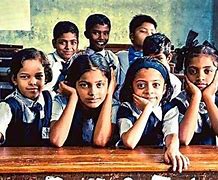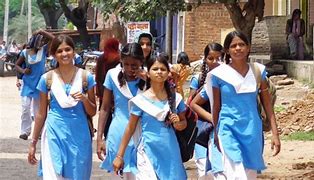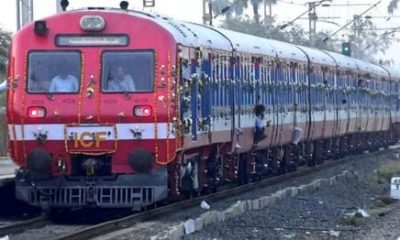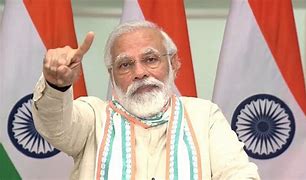Top News
Protests in Karnataka, state to release Cauvery water to Tamil Nadu
 Bengaluru:The Karnataka government on Tuesday agreed to release 15,000 cusecs of Cauvery water to Tamil Nadu daily for 10 days from Wednesday as directed by the Supreme Court.
Bengaluru:The Karnataka government on Tuesday agreed to release 15,000 cusecs of Cauvery water to Tamil Nadu daily for 10 days from Wednesday as directed by the Supreme Court.
“Despite severe hardship faced by Karnataka, the state will release water as directed by the order of the Supreme Court,” Chief Minister Siddaramaiah told the media after a three-hour long all-party meeting at the state secretariat here.
Reiterating that the state was bound to abide by the apex court order under the Constitution, the chief minister said the state had accepted to release water with a heavy heart despite being in a distress situation.
“This is not a normal year but a distress year due to deficit rains during the monsoon season. As a result, there is not sufficient water in the reservoirs across the Cauvery basin to release or share it with Tamil Nadu as per the tribunal award,” he said.
At the same time, the chief minister assured the people in the Mysuru region that the state would continue to supply the river water for drinking and irrigation.
“We will soon approach the Supreme Court for modifying its order to ensure we will have enough water for drinking and irrigation in the region through the year,” Siddaramaiah noted.
The apex court on Monday gave Karnataka three days to respond to Tamil Nadu’s plea and release 15,000 cusecs of water daily for 10 days from September 7-16.
“As directed by the apex court, we will also approach the Cauvery Supervisory Committee and present our case for relief, as we are not in a position to release more water to Tamil Nadu due to insufficient water in the reservoirs,” said Siddaramaiah.
Admitting that the state was to release 94 tmcft (thousand million cubic feet) of water to Tamil Nadu, but released only 33 tmcft due to poor rainfall in the catchment areas of the reservoirs in August, the chief minister said as a goodwill gesture, the state had agreed to release 10,000 cusecs of water daily for six days on September 2 when the bench asked the state to adopt the policy of “live and let live”.
“But the bench has directed us to release 15,000 cusecs of water daily for 10 days instead. As we cannot defy its order, we have decided to abide by it,” he said.
The chief minister also appealed to the people of the state to maintain calm and not to disrupt normal life by blocking roads and damaging public property.
Meanwhile, a day-long shutdown was observed in Mandya district to protest against the top court’s order to release the water to Tamil Nadu.
Besides disrupting normal life in the district, about 100km from Bengaluru, the shut down led to closure of schools, colleges, offices shops, hotels, theatres and petrol bunks.
Hundreds of protestors staged massive rallies and demonstrations in the district, blocking vehicular traffic on the Bengaluru-Mysuru state highway.
Though about 2,400 police personnel were deployed to maintain law and order, the angry protestors comprising farmers, traders and youth damaged the district office of the ruling Congress and attacked the state public works department office.
The state-run transport corporation (KSRTC) suspended bus services in the district and across the Mysuru region. Buses to and from Tamil Nadu across the border also did not ply during the day.
In a related development, police have tightened security and stepped up vigil in and around the four reservoirs — Kabini, Krishna Rajendra Sagar (KRS), Hemavathi and Harangi — in the river basin as hundreds of farmers threatened to lay siege if more water was released to the neighbouring state.
“We have also banned visitors and tourists from entering the KRS dam and Brindavan Gardens near Mysuru till September 9 to prevent protestors and agitating farmers from staging demonstrations or laying siege at the sluice gates,” a district official told IANS earlier.
Entertainment
Casino Days Reveal Internal Data on Most Popular Smartphones

International online casino Casino Days has published a report sharing their internal data on what types and brands of devices are used to play on the platform by users from the South Asian region.
Such aggregate data analyses allow the operator to optimise their website for the brands and models of devices people are actually using.
The insights gained through the research also help Casino Days tailor their services based on the better understanding of their clients and their needs.
Desktops and Tablets Lose the Battle vs Mobile
The primary data samples analysed by Casino Days reveal that mobile connections dominate the market in South Asia and are responsible for a whopping 96.6% of gaming sessions, while computers and tablets have negligible shares of 2.9% and 0.5% respectively.
The authors of the study point out that historically, playing online casino was exclusively done on computers, and attribute thе major shift to mobile that has unfolded over time to the wide spread of cheaper smartphones and mobile data plans in South Asia.
“Some of the reasons behind this massive difference in device type are affordability, technical advantages, as well as cheaper and more obtainable internet plans for mobiles than those for computers,” the researchers comment.
Xiaomi and Vivo Outperform Samsung, Apple Way Down in Rankings
Chinese brands Xiaomi and Vivo were used by 21.9% and 20.79% of Casino Days players from South Asia respectively, and together with the positioned in third place with a 18.1% share South Korean brand Samsung dominate the market among real money gamers in the region.
Cupertino, California-based Apple is way down in seventh with a user share of just 2.29%, overshadowed by Chinese brands Realme (11.43%), OPPO (11.23%), and OnePlus (4.07%).
Huawei is at the very bottom of the chart with a tiny share just below the single percent mark, trailing behind mobile devices by Motorola, Google, and Infinix.
The data on actual phone usage provided by Casino Days, even though limited to the gaming parts of the population of South Asia, paints a different picture from global statistics on smartphone shipments by vendors.
Apple and Samsung have been sharing the worldwide lead for over a decade, while current regional leader Xiaomi secured their third position globally just a couple of years ago.
Striking Android Dominance among South Asian Real Money Gaming Communities
The shifted market share patterns of the world’s top smartphone brands in South Asia observed by the Casino Days research paper reveal a striking dominance of Android devices at the expense of iOS-powered phones.
On the global level, Android enjoys a comfortable lead with a sizable 68.79% share which grows to nearly 79% when we look at the whole continent of Asia. The data on South Asian real money gaming communities suggests that Android’s dominance grows even higher and is north of the 90% mark.
Among the major factors behind these figures, the authors of the study point to the relative affordability of and greater availability of Android devices in the region, especially when manufactured locally in countries like India and Vietnam.
“And, with influencers and tech reviews putting emphasis on Android devices, the choice of mobile phone brand and OS becomes easy; Android has a much wider range of products and caters to the Asian online casino market in ways that Apple can’t due to technical limitations,” the researchers add.
The far better integration achieved by Google Pay compared to its counterpart Apple Pay has also played a crucial role in shaping the existing smartphone market trends.
Content provided by Adverloom

























